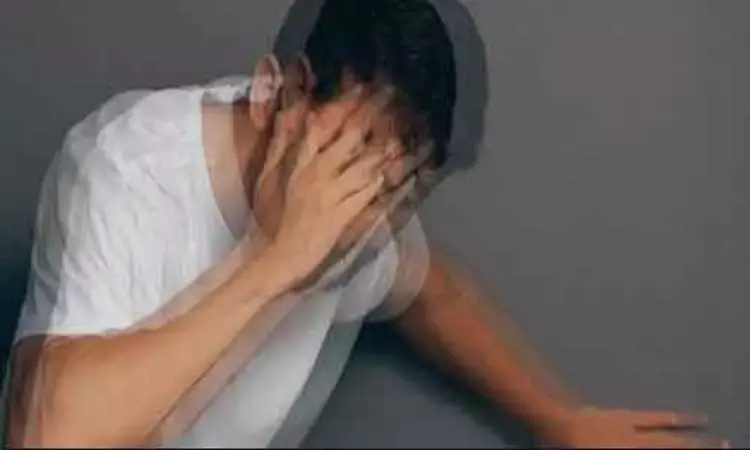- Home
- Medical news & Guidelines
- Anesthesiology
- Cardiology and CTVS
- Critical Care
- Dentistry
- Dermatology
- Diabetes and Endocrinology
- ENT
- Gastroenterology
- Medicine
- Nephrology
- Neurology
- Obstretics-Gynaecology
- Oncology
- Ophthalmology
- Orthopaedics
- Pediatrics-Neonatology
- Psychiatry
- Pulmonology
- Radiology
- Surgery
- Urology
- Laboratory Medicine
- Diet
- Nursing
- Paramedical
- Physiotherapy
- Health news
- Fact Check
- Bone Health Fact Check
- Brain Health Fact Check
- Cancer Related Fact Check
- Child Care Fact Check
- Dental and oral health fact check
- Diabetes and metabolic health fact check
- Diet and Nutrition Fact Check
- Eye and ENT Care Fact Check
- Fitness fact check
- Gut health fact check
- Heart health fact check
- Kidney health fact check
- Medical education fact check
- Men's health fact check
- Respiratory fact check
- Skin and hair care fact check
- Vaccine and Immunization fact check
- Women's health fact check
- AYUSH
- State News
- Andaman and Nicobar Islands
- Andhra Pradesh
- Arunachal Pradesh
- Assam
- Bihar
- Chandigarh
- Chattisgarh
- Dadra and Nagar Haveli
- Daman and Diu
- Delhi
- Goa
- Gujarat
- Haryana
- Himachal Pradesh
- Jammu & Kashmir
- Jharkhand
- Karnataka
- Kerala
- Ladakh
- Lakshadweep
- Madhya Pradesh
- Maharashtra
- Manipur
- Meghalaya
- Mizoram
- Nagaland
- Odisha
- Puducherry
- Punjab
- Rajasthan
- Sikkim
- Tamil Nadu
- Telangana
- Tripura
- Uttar Pradesh
- Uttrakhand
- West Bengal
- Medical Education
- Industry
Simple muscle techniques may help improve orthostatic hypotension

Philadelphia: Feeling lightheaded upon standing up due to initial orthostatic hypotension (IOH), or a transient decrease in blood pressure and increase in heart rate, is a common but poorly understood condition. A new study offers two simple cost- and drug-free techniques to effectively manage symptoms of IOH and improve quality of life by activating lower body muscle before or after standing. The research appears in Heart Rhythm, the official journal of the Heart Rhythm Society, the Cardiac Electrophysiology Society, and the Pediatric & Congenital Electrophysiology Society, published by Elsevier.
Syncope, lightheadedness, dizziness, or loss of consciousness from IOH, affects up to 40% of the general population (all ages), while presyncope is probably even more common. Despite this, the condition is relatively understudied and there is minimal information available about the underlying mechanisms or symptom management and treatment. Currently, there are very few options available to patients with IOH and no pharmacological treatments. The most common recommendations have been to stand up slowly or sit up first before standing.
"Almost everyone has probably experienced some lightheadedness at some time after standing up," explained lead investigator Satish R. Raj, MD, MSCI, FHRS, Professor of Cardiac Sciences, Libin Cardiovascular Institute, Cumming School of Medicine, University of Calgary, Calgary, AB, Canada. "For some people this is a frequent occurrence and may happen several times a day, which can be very frightening and negatively impact their quality of life. We wanted to explore this further and provide novel and effective symptom management techniques with the goal of improving the IOH patient's quality of life."
This study investigated physical maneuvers before or after standing and their efficacy in reducing the drop in blood pressure as well as the symptoms typically seen in IOH patients upon standing. Study participants included 24 young women (mean age 32 ± 8 years) with a high burden history of fainting immediately after standing and more than four episodes of presyncope or syncope per month. The study participants were required to have a significant drop in systolic blood pressure of at least 40 mmHg upon standing to fulfill the diagnostic criteria of IOH on the study day. Two participants had inadequate heart rate recordings and were excluded from the analysis.
The 22 study participants completed three sit-to-stand maneuvers including a stand with no intervention (control), and two interventions. Researchers found that both lower body muscle preactivation (thighs) through repeated knee raises prior to standing (PREACT) and lower body muscle tensing (thighs and buttocks) through leg crossing and tensing immediately after standing (TENSE) effectively improve the blood pressure drop. This led to a reduction in symptoms upon standing. They found that the PREACT maneuver accomplished this by increasing cardiac output, while the TENSE maneuver did so by increasing stroke volume.
"Our study provides a novel and cost-free symptom management technique that patients with IOH can use to manage their symptoms," noted first author Nasia A. Sheikh, MSc, Libin Cardiovascular Institute, Cumming School of Medicine, University of Calgary, Calgary, AB, Canada. "Since it is a physical maneuver, it simply requires the lower body limbs, which patients can utilize at any time and from anywhere to combat their symptoms."
"Our study demonstrates the physiology of IOH and assesses the utility of physical maneuvers that can help the IOH patient manage their symptoms. A diagnosis of IOH is identified by patients as the critical first step to empowering them to understand and master their symptoms and thus minimize the disruptions to daily living caused by this common, but not commonly understood, condition," added co-investigator Mary Runté, PhD, University of Lethbridge, Lethbridge, AB, Canada.
https://www.heartrhythmjournal.com/article/S1547-5271(21)02524-8/fulltext
Hina Zahid Joined Medical Dialogue in 2017 with a passion to work as a Reporter. She coordinates with various national and international journals and association and covers all the stories related to Medical guidelines, Medical Journals, rare medical surgeries as well as all the updates in the medical field. Email: editorial@medicaldialogues.in. Contact no. 011-43720751
Dr Kamal Kant Kohli-MBBS, DTCD- a chest specialist with more than 30 years of practice and a flair for writing clinical articles, Dr Kamal Kant Kohli joined Medical Dialogues as a Chief Editor of Medical News. Besides writing articles, as an editor, he proofreads and verifies all the medical content published on Medical Dialogues including those coming from journals, studies,medical conferences,guidelines etc. Email: drkohli@medicaldialogues.in. Contact no. 011-43720751


